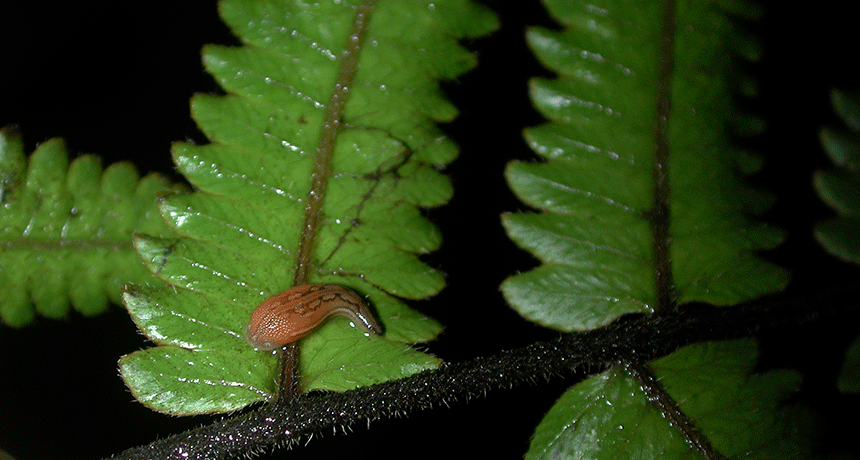Author: Yao-Hua Law / Source: Science News for Students

You might mistake a leech for a somewhat fat, flattened earthworm. But soft, slimy leeches have a very different lifestyle and diet. They eat all or parts of other animals, instead of dirt and the matter within.
And many feed on the blood of their hosts, which can include people. That bloodsucking action might aid science. It could highlight which species share a leech’s habitat. Scientists can even use leeches to find hard-to-spot animals that need protection, new research indicates.Every living thing has a unique set of genetic instructions locked into its DNA. While that DNA may make each individual look and behave somewhat differently, the DNA from every member of a species will all look fairly similar to others of its kind. Scientists can make use of that similarity to identify an organism’s species by its DNA.
When a leech feeds on some bigger animal, it picks up some of its host’s DNA. That DNA accompanies the host’s blood into the leech’s gut. In this way, the gut becomes somewhat of a record book of the species on which that leech had recently dined. With the right equipment and skills, scientists can pick out DNA from the leech’s gut, study it — and then figure out which animals that genetic material had come from.

Many animals that scientists care about are cryptic. That means they are hard to see.
They may hide out in trees, under bushes or in shallow streams. Because leeches inhabit many of the same places, analyzing their diet can be one way to “see” animals that try hard not to be seen by people and other potential predators or prey.Nearly 20 years ago, scientists tried to get around this problem of cryptic animals by attaching motion-activated cameras to trees. The tactic worked. Some of these first camera traps, dating to 1999, turned up the very shy — and rare — Javan rhinoceros in Vietnam. People had long thought it was extinct there.
A camera trap consists of a camera fitted with a sensor that detects movement. And they are now common. (People even install them in their backyards to see what visits.) When something — hopefully an animal — passes by, the sensor triggers the camera to snap a photo.
Although easy to use, camera traps can be expensive, damaged or stolen. They have to be placed in just the right spot to catch rare visitors. Extreme rain, cold or heat can take a camera out. And most cameras require that someone stop by frequently to retrieve the camera or its data to look for evidence of some rare quarry.
While camera traps can be handy, leeches can be better at scouting some cryptic forest dwellers, a new study found. Sarah Weiskopf, a wildlife biologist, led the study. It was part of her graduate research at the University of Delaware in Newark. Her group described its findings online February 19 in the Journal of Applied Ecology.
What they did

Weiskopf worked with a scientist…
The post Scientists recruit bloodsucking leeches as research assistants appeared first on FeedBox.